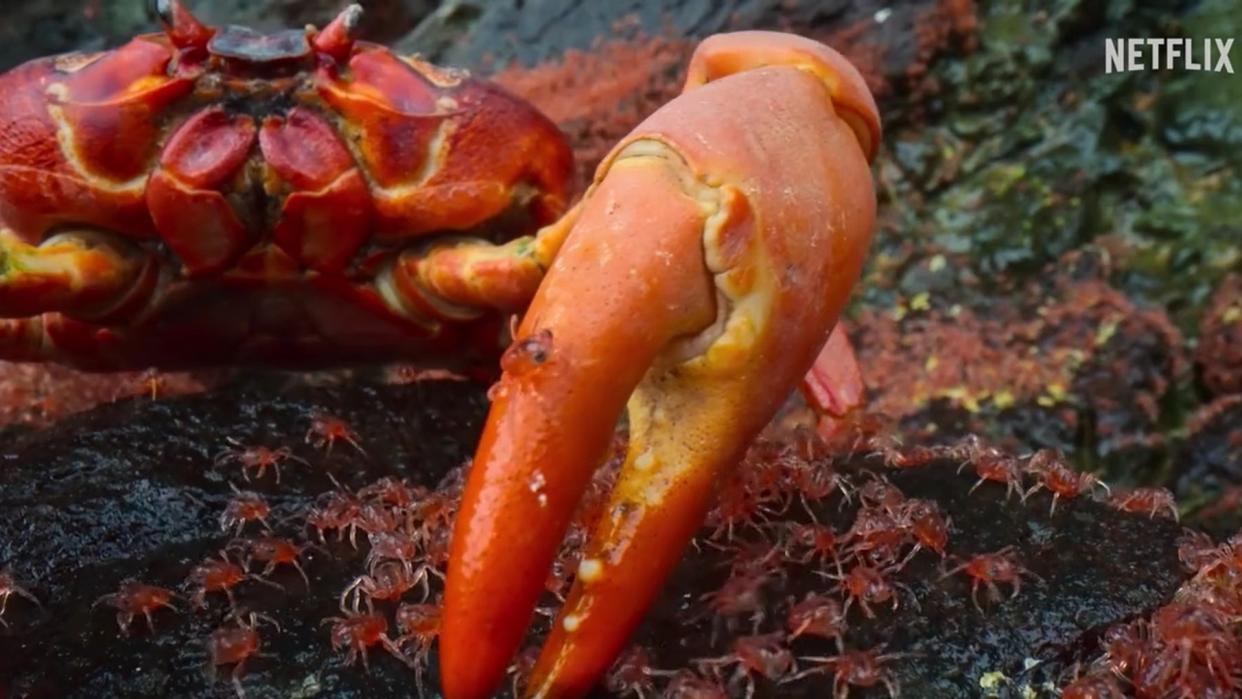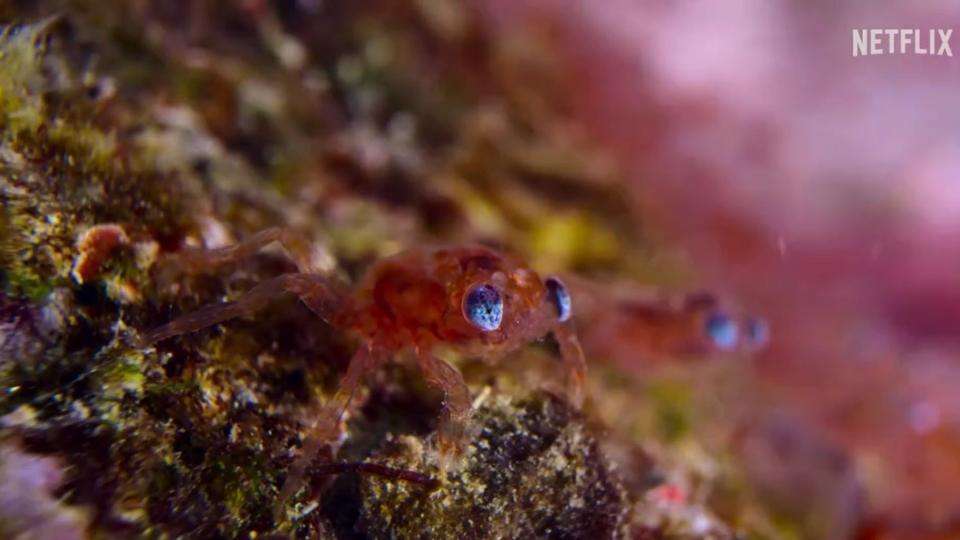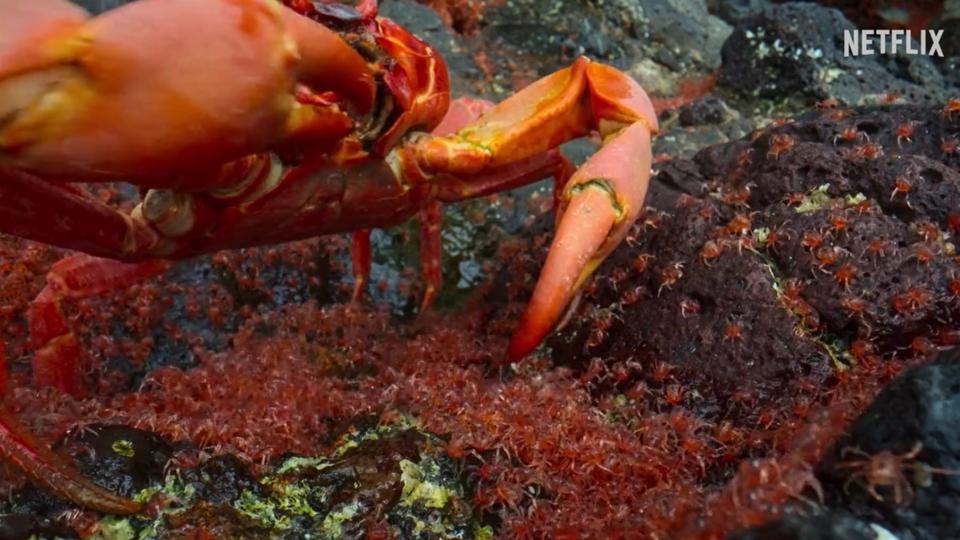Watch cannibal crab gobble up baby crablets in Australia in David Attenborough's 'Our Planet II'

Incredible footage captures the moment billions of baby crabs risk their lives as they scurry past cannibal adults and swarm the shores of Australia's Christmas Island .
The ultra-rare video features in "Our Planet II" — David Attenborough's latest Netflix series looking at how animals are adapting to our changing planet — and gives viewers an unprecedented insight into one of the largest congregations of red crablets ever seen.

The Christmas Island red crab (Gecarcoidea natalis) migration takes place every year, with an estimated 65 million of these crustaceans traveling 1.2 miles (2 kilometers) from the forests where they live on the island to their coastal breeding grounds.
Related: Why do animals keep evolving into crabs?
The migration begins after the first rainfall of the wet season, normally in October or November, according to Parks Australia. When they reach the sea, male crabs dig burrows before being joined by females for mating, with the male transferring sperm for the female to keep in a storage sac. The males then leave, and the females stay behind, producing up to 100,000 eggs each in a brood pouch, an oval-shaped glob attached to the abdomen.

Spawning takes place before dawn during the last quarter of the moon, when females release their eggs into the water as the high tide turns and starts to recede. "The fertilized eggs are dropped into the ocean by the females and hatch on immediate contact with the water," Lucy Turner, a marine biologist at the University of Plymouth, U.K. who was not involved with the video, told Live Science in an email.
Over the course of a month, after going through different larval stages, the baby crabs — or crablets — eventually develop into little creatures known as megalopae.

In the new clip from "Our Planet II," viewers see the crablets' return to dry land. As they emerge from the water, they shed their waterproof shells to become fully formed crabs at just 0.2 inch (5 millimeters) across.
But as they get to the beach, danger is lurking. An adult crab stands waiting, picking the tiny crablets up with its claws and eating them.
"These crabs are opportunistic scavengers so will feed on anything," Turner said. "I have never seen this behavior before though, where they are cannibalistic of juveniles. I've seen them eat other dead adults."

This cannibalistic behavior is particularly surprising as adult red crabs are usually not aggressive so would not actively hunt one another, said Simon Webster, a zoologist at the U.K.'s Bangor University who was not involved with the footage. "They certainly need to feed on their migration," Webster told Live Science in an email. "When they finish their migration, the glycogen levels in their muscles are extremely low, so anything they can eat, they will!"
He added red crabs will also feast on dead, squashed crabs if they find them on the road.
RELATED STORIES
—Tiny 'immortal' crab entombed in amber discovered in a first of its kind
— What made billions of snow crabs disappear from the Bering Sea?
— Red crabs swarm like insects in incredible underwater video
Only a small percentage of Christmas Island red crablets make it to the forest. Many are killed before they even leave the ocean. "We don't have exact numbers for this but based on other crabs with a marine larval phase we estimate that less than 10%, and it could be as few as 1% reach the shore, and similarly reach adulthood," Turner said.
What happens when they reach the forest is unknown. "The small crabs just seem to vanish into the rainforest," Webster said. "It has been suggested they occupy old, unused burrows, and it is thought that they stay in the rainforest … for their early life, but essentially, this is still somewhat of a mystery."
"Our Planet II" will be available to stream exclusively on Netflix from June 14.

